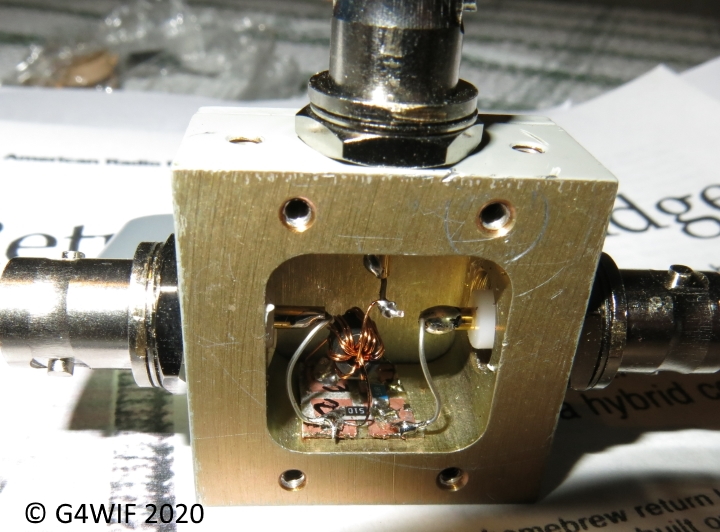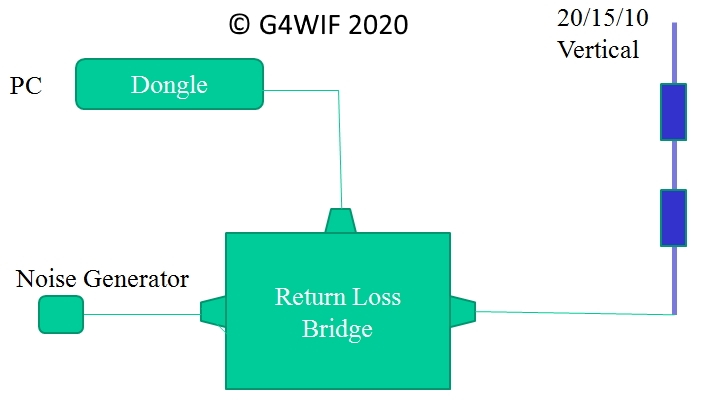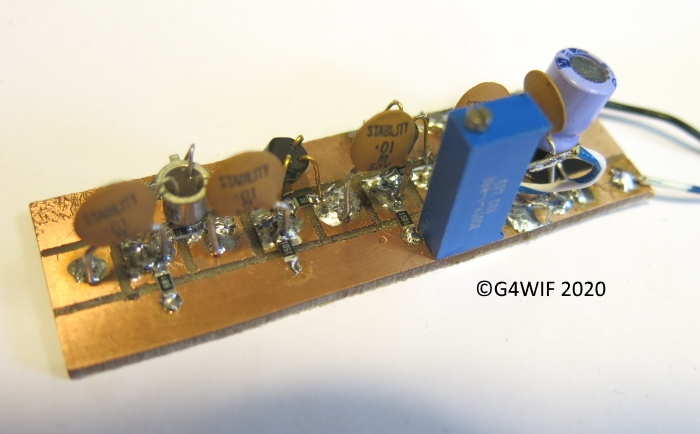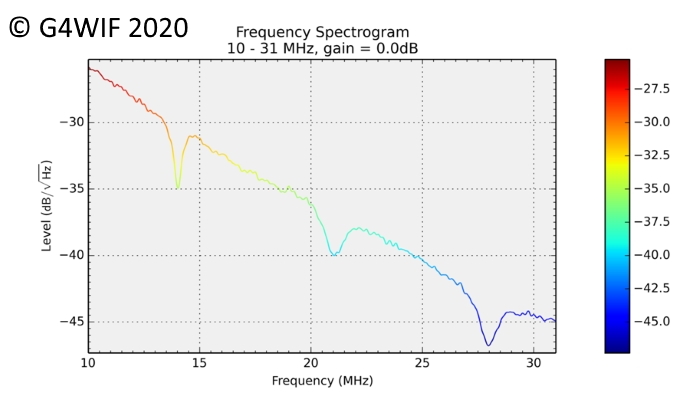Home
September 2016 - Return Loss Bridge
A recent Radcom featured the use of a device that I had never built. I decided it was about time to see what a Return Loss Bridge could do for me.
I started by searching for a construction article and found this from Jim Ford N6JF . It is more or less the same article that appeared in September 1997 of QST
This is what I ended up with using surface mount components.

The Return Loss Bridge has three ports. RF Source, Load, Detector.
So what could I test to see the bridge in action?
I have a three band trapped vertical on 20, 15 & 10 metres. I thought it would be interesting to "shine" wide band noise into the RF source port, connect the antenna to the load port and see what a TV dongle could detect while using the free SDR Spectrum Analyser software from "Ear to Ear Oak". (odd name but nice software).
This is how it was connected....

The noise generator is the N0SS design that has been around a long while and works very well. The board shown was milled using my pillar drill and X-Y vice.

My TV dongle has the addition of a downconvertor to make it really sensitive in the HF spectrum. The resulting plot was quite impressive for such a simple set up.

You can certainly see the resonance points for the 20, 15 and 10 metre bands. The reason that there is a sloped response is that my zener diode noise generator falls off in output across the HF region. It would be interesting to see how well one of those inexpensive chinese signal generators work in this situation as they have a sweeping function. In another article I show this same experiment with the zener noise source replaced with a comb generator.
There are quite a few useful articles on the web describing how to use a Return Loss Bridge.
This is one that I found useful.